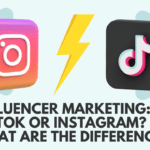Does digital media primarily target the younger generation? Not necessarily.
Does digital media primarily target the younger generation? Not necessarily. The key to reaching different age groups with digital content is generational marketing. This approach involves tailoring the marketing strategy and choice of online channels to the respective generation’s values, interests, and media consumption behaviour. Learn more about the different generations and the type of content that will help you reach specific target groups.
Which Generations are Relevant for Generational Marketing?
Today’s society can be divided into four main generations characterized by different interests, hobbies, habits, and preferences:

Baby boomers
The baby boomer generation was born between 1946 and 1964 and is gradually acquiring a taste for modern technologies. This age group regularly reads online content – more than 20 hours a week in total. The generation’s main interest clearly lies in global news. A unique characteristic: baby boomers prefer desktop computers to mobile devices.

Generation X
Generation X (born between 1965 and 1980) witnessed the birth of the internet and is clearly more open to social media than baby boomers. According to surveys, about 80% of this generation uses Facebook and Twitter. Generation X is highly interested in topics such as lifestyle and entertainment. This group prefers brief digital content and uses both desktop computers and mobile devices.

Generation Y/Millennials
This target group was born in the years from 1981 to 1999 and is extremely well-acquainted with social media. It represents the largest group of employees and entrepreneurs and amasses purchasing power of US$200 billion in the United States alone, which it preferentially spends on online shopping. Generational marketing therefore frequently targets these so-called millennials. This group is particularly receptive to reviews, online evaluations, and personalized product recommendations (e.g. through micro-influencers on blogs).

Generation Z
Generation Z refers to those born in or after 2001, meaning it represents the target group of teenagers and children. They are playing an increasingly important role in generational marketing, since they will have the most extensive technological know-how by far in the next few years. Furthermore, they also influence their parents’ purchasing decisions. A successful marketing strategy for Generation Z must be tailored to mobile devices, as this group uses smartphones far more than any other device. Its preferred media include YouTube videos and social media channels.
How the Different Generations Consume Media
Numerous statistics are available on the media consumption behavior of the various generations. The following provides an overview of essential information on the topics of social media, reading behavior, and areas of interest by generation:

Social media – there’s no getting past Facebook
The number of users that are active on social media varies strongly between the different generations. While an impressive 89% of 18- to 29-year-olds use social media, this number drops to 80% for 30- to 49-year-olds, 64% for 50- to 64-year-olds, and down to a mere 34% for users over 65. Facebook is the most popular platform by far. In the group of 18- to 29-year-olds alone, 88% percent have a Facebook account.

YouTube – the channel for product tests
YouTube is the new television for the younger generation as well as the largest platform for product tests and reviews. 90% of Generation Z uses YouTubeeither on a daily basis or several times per week. 78% of Generation Y and 66% of Generation X are regular YouTube users.

Reading behavior – who reads how much?
When it comes to online news, we can see a great difference between the generations regarding both the areas of interest and the willingness to delve further into a topic. The older the generation, the more popular ‘classical’ digital news content becomes. While only 59% of 18- to 29-year-olds find time to read the news, this number rises to 89% for individuals aged 60 and over. Of these users, 54% show an interest in further details.

Areas of interest– as changeable as the weather
All generations share a great interest in the weather. Environmental, economic, crime, health, and social issues also constitute important topics for the group of 18- to 29-year-olds. 30- to 39-year-olds also show an interest in news about domestic policy, foreign policy, as well as science and technology. Local news, health, and education represent additional topics of interest for the two older generations.
How to Reach Your Target Audience with Generational Marketing
Despite their different media consumption behavior, the individual generations display many common characteristics. You should be sure to take these into account to reach the largest possible group of users with your digital content. All generations prefer short, concisely formulated content of 300 words or less.
To achieve success in generational marketing, it is essential to not only win over users with content, but to also address their rational and emotional sides. With this in mind, digital content should also cover topics that reach your target group on a personal level.
In the following, you will find specific recommendations for the various generations:
Baby boomers
- Less is more: Over 50% of baby boomers prefer digital content limited to less than 300 words.
- Baby boomers value high-quality content. They prefer discerningblog posts, online media, reviews, and e-books.
- This group grew up in a very conservative and frugal time.
- Discount campaigns show a high rate of success with this group.
Generation X
- About 20% of Generation X likes to read digital content with more than 500 words.
- The number of Facebook users in this group is considerably higher than with baby boomers, so Facebook and Twitter represent promising marketing channels for this target group.
- About 7% of Generation X regularly watches digital videos. This medium should therefore also be used to address potential users.
- Since this generation uses email very frequently, it is very receptive to email marketing campaigns.
- Blog postswith relevant, clearly formulated content that is tailored to the users‘ interests will influence their purchasing decisions and can increase revenue.
Millennials
- This generation has a lot of spending power and is at home in the world of social media.
- To reach this attractive target group, you should use all current social media channels as well as popular apps for your marketing actions.
- Mobile marketing is an absolute must with this generation, since smartphones and mobile devices are firmly integrated into their everyday lives.
- Video marketingis currently experiencing an upward trend: real-time videos are growing increasingly popular among millennials.
- User-generated content such as blogs, chats, tweets, digital images, and audio recordings represent good possibilities to pique the interest of millennials.
Generation Z
- Social media platforms such as Facebook, Twitter, and YouTube are indispensable to the world of the youngest generation. Marketing measures should be therefore focused primarily on these channels.
- Short videos in a GIF format with fast background music are also a good way to draw Generation Z’s attention to your products.
- Young users are open to any kind of quiz or survey. Use this means of communication to find out more about this group’s preferences and interests.
- Since this target group grew up with DSLRs and other modern cameras, pictures have a special effect on its members. You can use photos as an eye catcher to address Generation Z on social media.
Using Generational Differences to Your Advantage with Generational Marketing
Generational marketing offers you the opportunity to draw the attention of different generations to your products via digital media. Marketing measures specifically targeted to the respective generation enable you to match your digital content to the habits and preferences of the users and potential buyers and to reach them on an emotional level.




